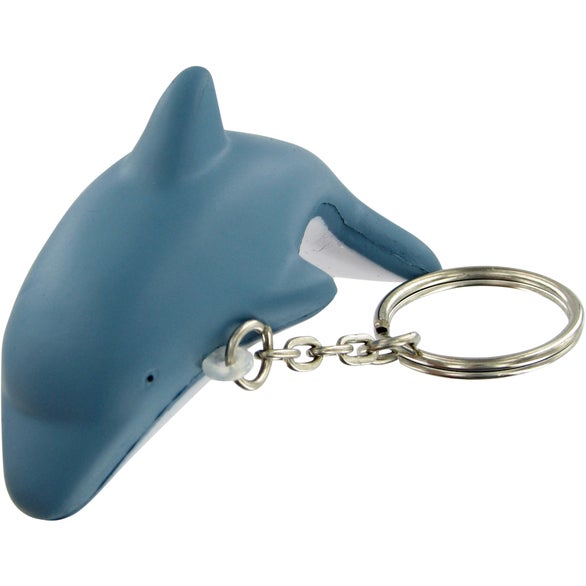
There are many types of concealed carry knives. They are designed for efficiency and ease of use. You have a choice of different designs. The knife's overall layout is designed to be simple to carry and conceal. Whatever type of knife that you choose, it's important to be aware of the laws in your particular state before you carry one.
Concealed carry laws restrict knife carrying
The laws surrounding concealed carry knives vary from state to state. The law does not apply to individuals who are on federal property, or those who travel across state lines. Concealed carry knives are not allowed in other states. However, in New York, the knife law is incredibly restrictive for many individuals.
Some states have laws that prohibit pocketknives. However, most states don't. Nevada is an example of a state that prohibits knife ownership for people with felonies. New Jersey also has certain rules for knife ownership, while the states of Oregon and Utah also ban knives for felons. A few people may not be allowed to carry knives in Wisconsin and Wyoming due to their criminal records or mental health.

Types Of Concealed Carry Knives
There are many concealed carry knives. Each knife has a different purpose and benefits. For instance, some models are specifically designed for self-defense and others are for combat. There are also knives for everyday usage. However, it's important to consider the knife's legal status in your state. The type and length requirements for the knife should comply with your local laws.
Certain types of knives are prohibited. Michigan is one of the states that has specific laws about knives. Some knives are permitted, like hunting knives. Others are prohibited. Additionally, knives that are not allowed to be carried in public places are prohibited. If you're trying to carry a knife while walking in New York City, you won't be able to carry a dirk or a stiletto, which are both prohibited. Other types, such as ballistic knives and non-folding knife with double edges, are also forbidden.
Legality of concealed carry knives in various states
It is important to understand the laws of each state regarding concealed carry knives in the United States. Knives can be considered dangerous weapons in certain states. This could result in criminal prosecution. However, there are some exceptions to this rule. For instance, in Wyoming, knives that are less than three inches long are not considered dangerous weapons. In Washington, pocketknives may be carried openly. However, it is important to know that this can create an uncomfortable situation and could get you in trouble.
The Tennessee knife laws were confusing and complicated in the past. However, they have become much more flexible in recent years. Tennessee has no laws that prohibit the transport or ownership of pocketknives. You should be aware of all laws before you can carry a knife in any state. However, Tennessee is one the most liberal states regarding blade laws.

Techniques to conceal a blade
Planning and careful planning are required when carrying a knife to self-defense. It requires dedication to training and sound decision-making. The situation will dictate the best technique. You might want to carry your knife either horizontally or vertically. For horizontal carry, position the knife so that the handle faces you.
It is best to verify the regulations and permit requirements for concealed carry if you are in an area that allows concealed carry. Usually, fixed-blade EDCs that are no longer than three inches are best. You can conceal your EDCs with pocket knives and swiss-army knives, as well.
FAQ
Is it possible to give stun guns to children?
It all depends upon the child's age.
For those under 18:
18+: Yes
If you give a stun gun as a gift to a minor, make sure they are aware of the dangers.
They should only use it with adult supervision.
What does it cost to sign up for a course in self-defense?
There are many self defense courses. The cost of self-defense courses varies depending upon where you live and whether or not you take them online.
Some schools charge just $50 per Month, while others charge upto $200.
You can find a low-cost option at your local community center. Many of these locations offer free self defence lessons.
What is the most effective method of self-defense?
Avoiding being attacked is the best way for you to defend yourself. When you are attacked, it is best to flee as fast and as possible. This will allow you to come up with a better defense strategy.
If you can't escape, you can use the defensive strategies you have learned. These include punches, kicks, and knees. You can also grab your attacker’s arms or legs to stop him attacking you further.
If none of these options works, you will need to fight back with all the available tools. Your naked hands are the most powerful weapon. You should learn how to use them correctly if you are not familiar with the basics.
How much does a stun gun cost?
Depending on the model, a stun gun can range anywhere from $20-$100.
Two batteries are included in most models. The battery lasts approximately three to four months.
Can I be arrested for using my stun guns?
No. Stun guns are considered "less deadly" weapons. They cannot inflict serious injury and are therefore considered less deadly.
However, charges could still be brought against you if you accidentally hit anyone with your stungun.
How do beginners do self-defense?
Experts are not the only ones who can learn self-defense. It's also important to know how to defend yourself when you are alone. Learn some basic techniques to defend yourself from an attack.
Start by learning basic movements like punching, kicking and kneeing. Then, you can move on to more complex moves like grappling or joint locking.
It is always useful to practice something that is similar to what you might face in real-life situations. If you want to learn how kick someone, you can practice on something like a pillow.
By doing this, you will not injure yourself while practicing. Be careful not to strike anything too hard as you could cause damage.
What does a stun gun do to an attacker?
Stun guns use electricity to incapacitate people. The electricity causes muscle contractions, which stop them from moving. They are unable to fight back.
Stun guns generally work best when they are used on the neck area or head.
The most common use of a stungun is to shoot at the victim's body parts until they become unconscious.
Some stun guns also emit high-pitched sounds to scare attackers. These stun guns are known as TASERs.
Statistics
- The Rape, Abuse & Incest National Network reports that 70 percent of sexual violence cases aren't committed by random strangers in a dark alley but by people we know: friends, family, partners, co-workers, etc. (healthline.com)
- In a January 2018 survey of 1,000 women nationwide, 81 percent reported experiencing some form of sexual harassment, assault, or both in their lifetime. (healthline.com)
- Most likely, you'll get tapped out by 90% of the people in your first 3-5 months. (mmaclan.com)
- Saying this, Self defense 101 would be the importance of situational awareness, which can never be replaced by the finest of martial arts, because it is this that would help you to avoid any likely attacks in the first place. (worldofselfdefense.com)
External Links
How To
Which type of self-defense should you learn?
Self-defense is a broad term, which can cover a wide variety of options. There are many forms of self defense that you can learn. These are the most popular:
-
Boxing – Because you can fight with your hands, boxing makes a great self-defense option. Most people think that only men can box, but women can too. Women can learn boxing through various methods, including private lessons, gyms, and online courses.
-
Wrestling – Many people think that wrestling isn’t a sport. It was once the nation's pastime. Women can learn wrestling through private lessons, gyms, and online courses.
-
Jujitsu: Jujitsu can be described as another martial art that teaches how to defend your self using your body weight. It is very easy to learn. You will improve your balance and coordination.
-
Kickboxing - Kickboxing is similar to Muay Thai, except that it uses kicks instead of punches. It is a full-contact combat sport without rules, much like Muay Thai. Because it is easy to learn, it's a great choice for beginners.
-
Tae Kwon Do – TKD is a Korean martial arts that combines elements from karate and taekwondo. It is an ideal choice for anyone who wants to learn self-defense without having to worry about hurting their opponent.
-
Mixed Martial Arts – MMA is a mix of different martial arts. It blends Judo Judo Boxing Wrestling, Judo, Judo, Boxing and Brazilian Jiu Jiu Jitsu. It is one of the most popular sports because it is so efficient.
-
Karate - Karate refers to a Japanese martial style that focuses on kick techniques. It has been around for hundreds and years, and it has changed over the years. Today, there are many styles and methods of karate.
-
Knife Fighting - Knives are very useful when defending yourself. It's not necessary to be near your attacker in order for you to stab them. Only you need to know how to safely use a knife.
-
Pepper Spray - Pepper Spray is a non-lethal weapon which can be used to escape an attack or stop it from starting. However, pepper spray should not be used on attackers because they may get burned.
-
Firearms – Shooting an attacker is the last resort. Law enforcement officers or trained civilians usually do this.
-
Self-Defense Classes: A self-defense course is a great way to master all these skills in one place. They cover everything from grappling and shooting.
-
Combative Sports – Another option is to participate in combative sports such as mixed martial arts fighting, kickboxing or amateur wrestling. These sports require a lot of practice and discipline. They also teach you how to protect your self.
-
Martial Arts Schools – If you are serious about learning how defend yourself, then you should go to a school that teaches martial arts. Some schools offer classes that include weapons as well.
-
Online Courses: There are many free resources you can access. 15) Books: Finally, some books can be very helpful. Alan Peppard's book, "The Complete Idiot's Guides to Self Protection", covers all of these topics.
-
Start With What You Know - Before trying to learn something new, make sure you first master what you already know. By doing so, you can avoid making mistakes that could cause you harm.
I'm thinking I might try self-defense. I've always wanted to learn how to fight but was never interested in actually doing it. Now that I'm older, I think it's time to start looking after myself instead of relying upon others.
I've decided that I will start slowly and see what happens. To start working out with weights and other exercises, I am considering joining a gym in my area. I am still deciding if I should buy a gun.